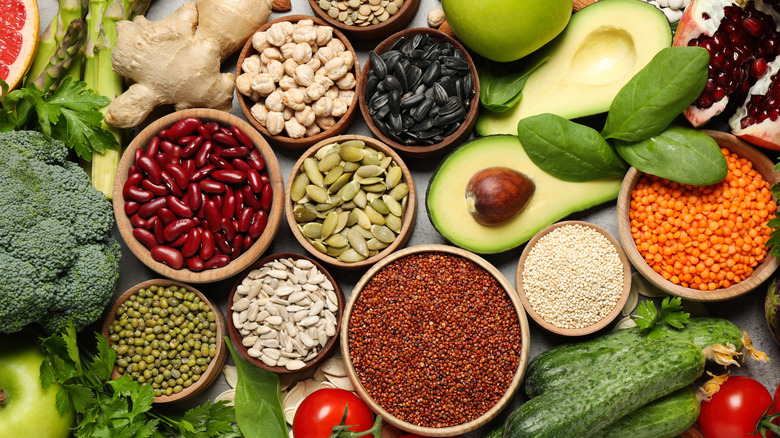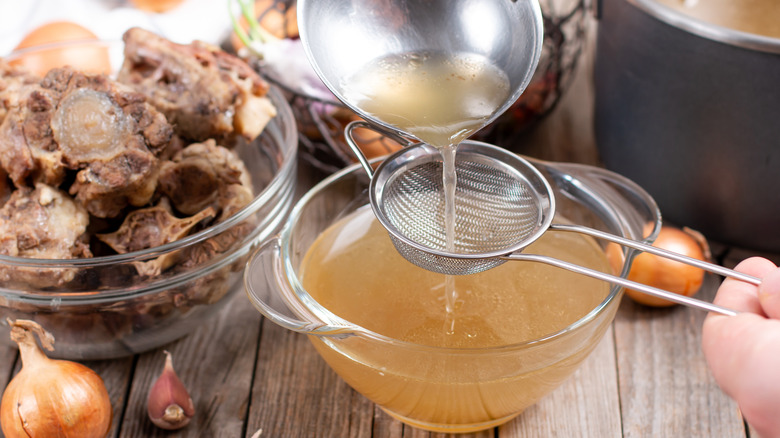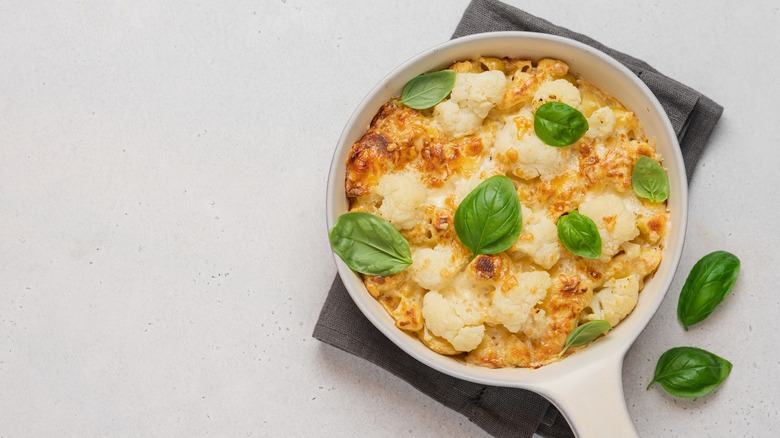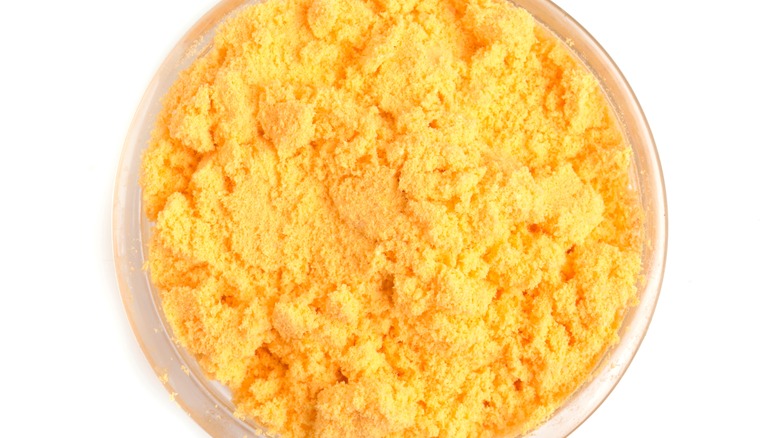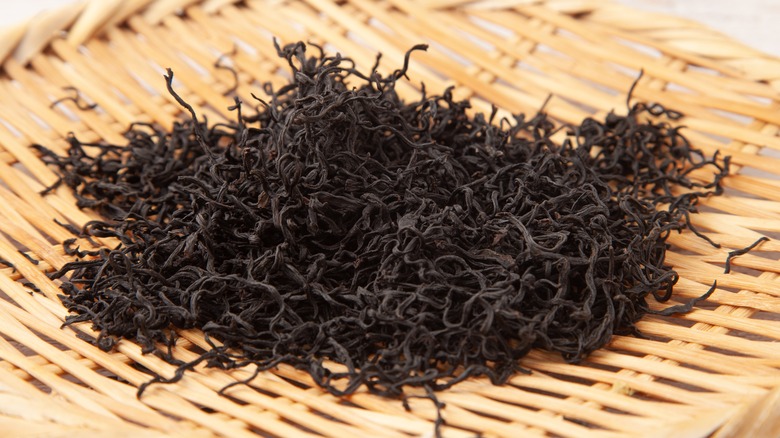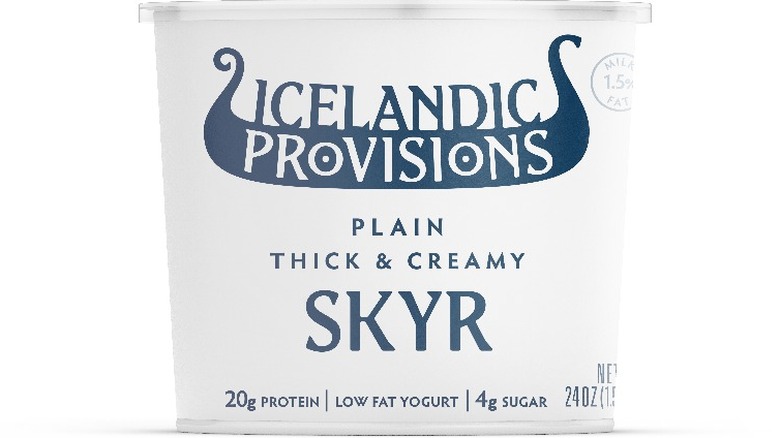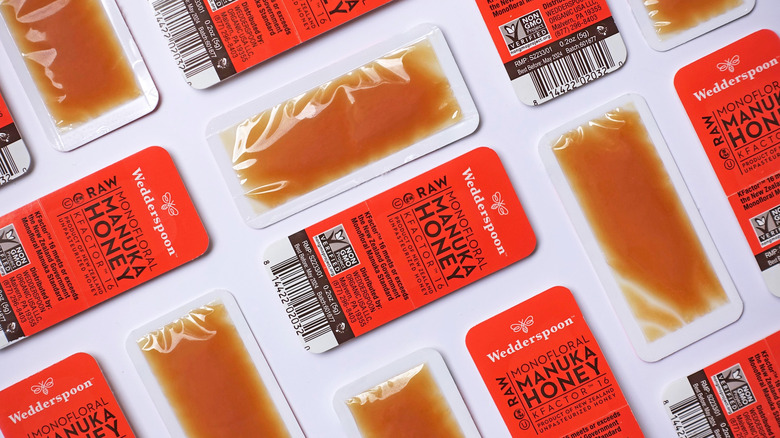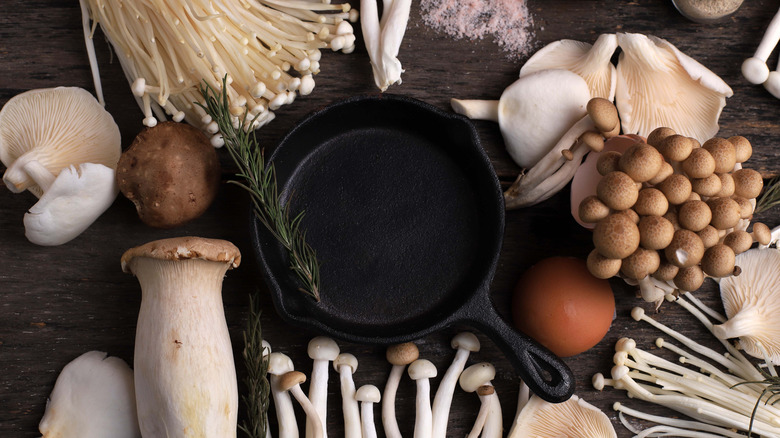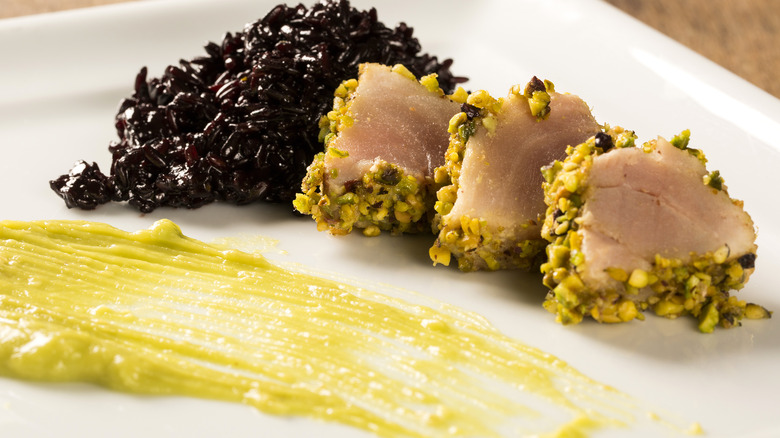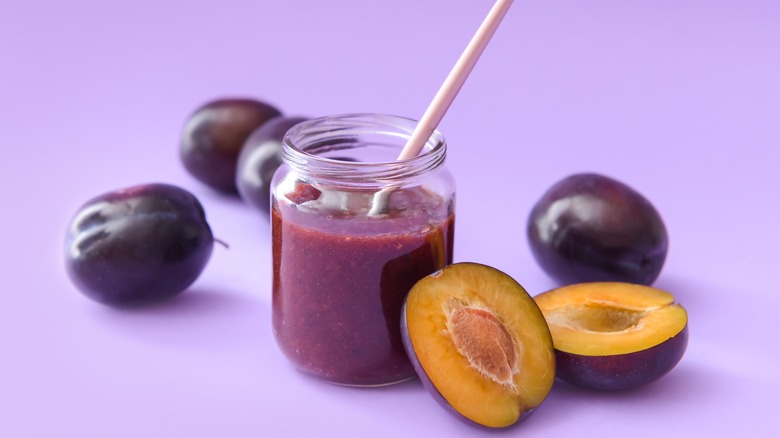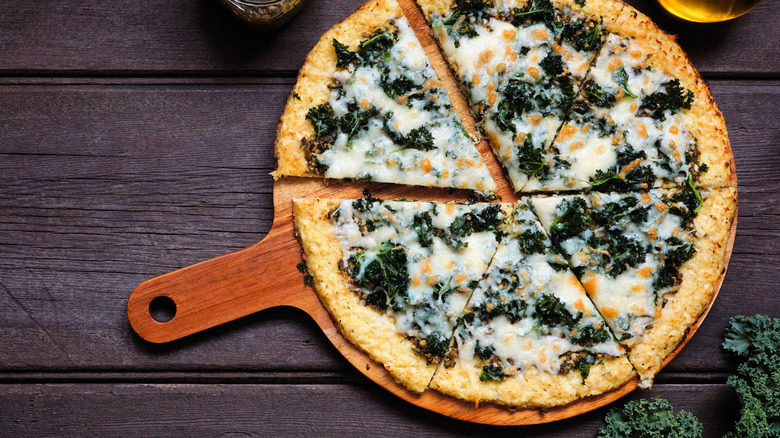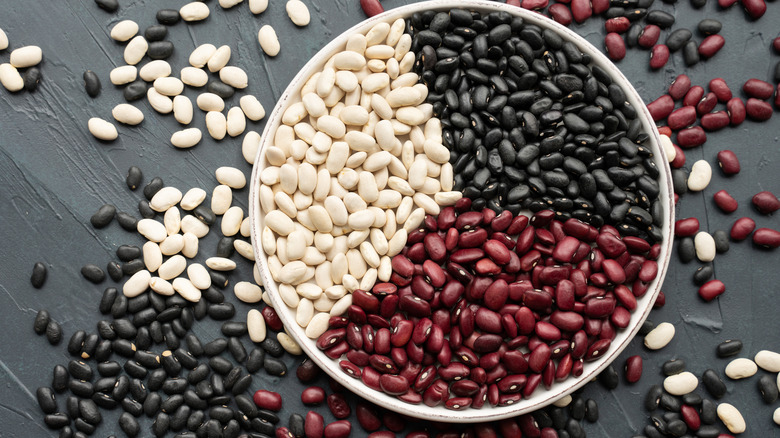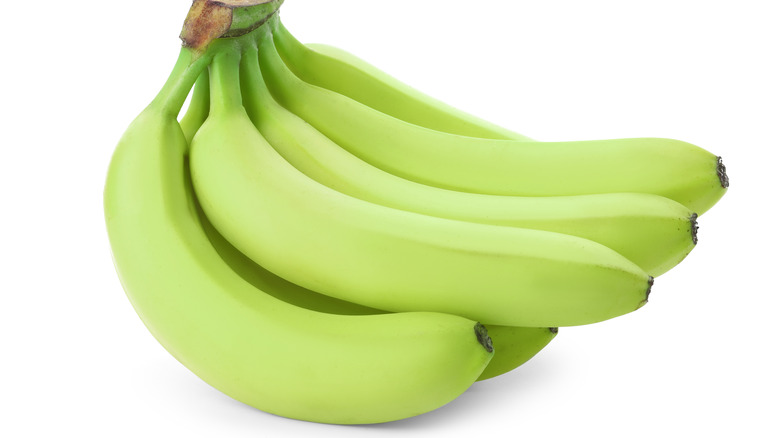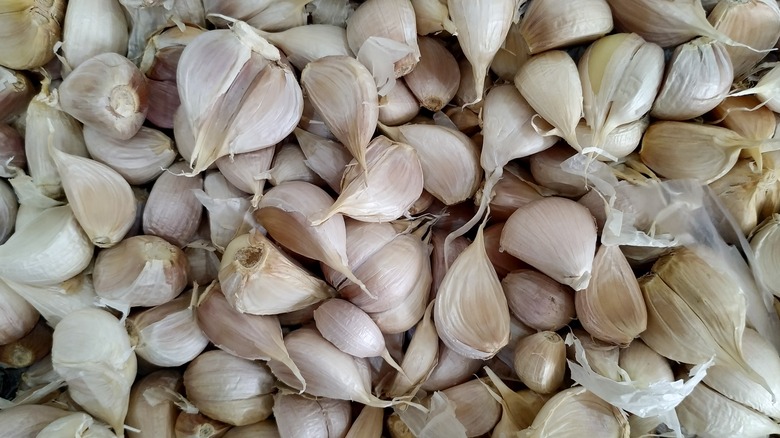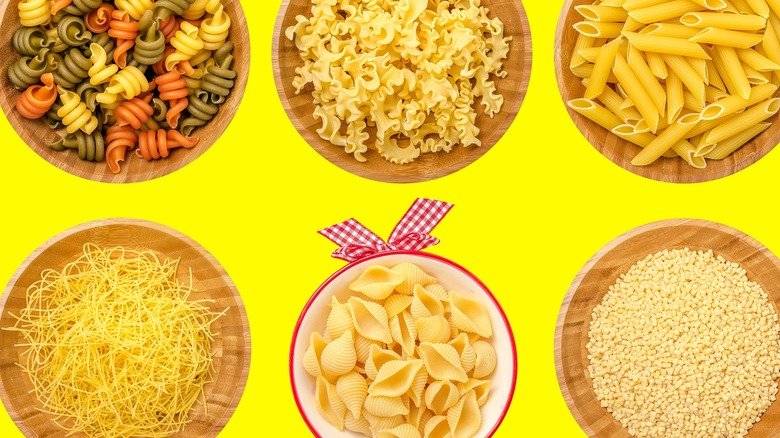15 Simple Ways To Make Average Meals More Nutritious
Getting into a healthy routine can be daunting, and sometimes, the best way to approach it is to take baby steps. It does not have to be "all health is breaking loose!" Little by little, start to incorporate healthy foods into your diet and begin to swap out foods that are considered empty calories. The addition of some ingredients can make a dish more nutrient-dense as well. Some new choices might stick, and some may not be your thing, but that's the beauty of experimentation.
Talk to your doctor about your specific health needs, but in general, a plant-heavy diet rich in fruits, vegetables, whole grains, and protein sources is nutritious for most people. We put together some easy hacks to pack your meals with more wholesome ingredients and other hacks to eliminate less healthy foods. Many of these tips are so sneaky that you wouldn't know the difference if you hadn't made it yourself!
Cook rice with bone broth instead of water
Pump up your rice's flavor and nutritional value by cooking it in bone broth instead of water. Bone broth is made by slow-cooking meaty joints and bones in water and vinegar (or something equally acidic). It makes a protein-rich broth filled with collagen and other nutrients because of the collagen released when cartilage and bone break down. Reports suggest that bone broth may improve skin elasticity and smoothness, as well as provide a boost to the body's immunity. Not to mention it is high in protein. If that doesn't pique your interest — it's also delicious!
Bone broth can be enjoyed as a sipping beverage or as a base for soups, stews, and meals. The rich liquid adds an umami-like savoriness to your meals, especially when paired with otherwise bland foods like rice. You can make your own with this immunity bone broth recipe or purchase some in premade cartons or jars from the store. Dr. Kellyann is a master of science and a naturopathic doctor who has started a line of bone broths in powder and liquid form as well as offering other nutrient-dense products. To make bone broth rice, follow the instructions for rice cooking and swap the water out for bone broth. Then, add garlic, onion, and herbs for more flavor, or choose one of the flavored broths in Dr. Kellyann's line.
Mix innocuous veggies into mac 'n' cheese
Every parent has dealt with a child's disdain for certain nutritious foods. No matter how good of an eater a child is, there will always be ingredients they despise for no reason. Most kids also go through an intense phase where mac 'n' cheese is king and must be served at least once a day. What if we told you that you could get your kid to eat their veggies and not deprive them of their precious mac? Turns out, ooey-gooey cheese is the perfect hiding spot for vegetables that have been cooked down or pureed. The simplest vegetables to sneak in are white or orange. It also helps if they are not overpowering in taste or smell, so they are not detected.
Some inconspicuous veggies to try are cauliflower, butternut squash, kabocha squash, and carrots. You could even swap hemp or oat milk to increase the nutritional value. Healthline says that cauliflower contains almost every vitamin and mineral needed for a healthy body, also stating that butternut squash is high in vitamins A, C, magnesium, and potassium. Web MD tells us that carrots are excellent sources of potassium, antioxidants, and vitamin A, among many others. Grab some fresh produce at the farmer's market or grocery store and steam it until it is mashable. Alternatively, you can buy frozen veggies that can be steamed in the bag, like Bird's Eye cauliflower, kabocha squash, butternut squash from Earthbound Farm Organics, and Cascadian Farms carrots.
Instead of butter, salt, or cheese — add nutritional yeast to popcorn
Popcorn in and of itself is a pretty benign snack. However, when butter, cheese, and salt are added, it becomes more of a treat than a snack. Nutritional yeast offers salinity, a granular texture akin to powdered cheese and salt crystals, and the savory richness of butter. It comes in a canister that can be sprinkled on top of your popcorn, and none will be the wiser. It's a great vegan, gluten-free, low-sodium option that doesn't disappoint in taste.
Called "nooch" in the vegan community, nutritional yeast is a dairy-free cheese alternative, and an excellent source of plant-based protein, B vitamins, and trace minerals, according to Healthline. Two teaspoons of nutritional yeast pack 313% of the daily value for vitamin B12. The trace minerals nutritional yeast offers include zinc, selenium, manganese, and molybdenum, which aid in gene regulation, metabolism, growth, and immunity. Healthline also recommends using it in various ways, such as seasoning in dishes like pasta, salad, and casseroles, giving umami to soups, stews, and chili, replacing cheese in vegan sauces, and thickening sauces.
Throw some hijiki into your rice cooker
Hijiki is a type of seaweed found on the shores of China, Japan, and Korea that is chock full of nutritional benefits. According to Organic Facts, this sea veggie can potentially improve digestive health, boost energy levels, strengthen bones, lower cholesterol, eliminate sleep disorders, balance hormonal activity, and improve metabolic efficiency. It's a super-duper food. Hijiki is associated with all of these health benefits because of the high amount of essential minerals, dietary fiber, vitamin K, calcium, iron, magnesium, and iodine.
The iron count alone makes this an incredible addition to a meal — hijiki can contain up to five times more iron than chicken liver.
It is incredibly versatile because its nutritional value doesn't diminish as it dries. Hijiki looks like dried tea leaves or vanilla bean pods as it is long, thin and black in color. When rehydrated, hijiki grows from three to five times the shrunken size. It has an earthy, umami flavor which is different than most other seaweeds, which are more on the briny side. As hijiki is a popular ingredient to add to onigiri, an excellent tip for stir-fry is to add this power-packed seafood. Why not throw some into your rice cooker and let it rehydrate while the rice cooks? Even a simple meal of rice and hijiki is full of flavor and nutrients.
Use yogurt to substitute for mayo or sour cream
When you want to add creaminess and richness to a dish, the ingredients listed in a recipe are usually mayonnaise, sour cream, or heavy cream. To achieve that texture and depth of flavor without saturated fat, consider yogurt. Plain greek yogurt or plain skyr like Icelandic Provisions will offer the desired effect with a healthy addition of probiotics and protein. Plus, it has the same tang that mayo would add to a dish and is one of the best sour cream alternatives. For sweet treats, maybe opt for a vanilla-based or fruit-flavored yogurt. This swap is handy for dips, dressings, and sauces. You can even top a baked potato with plain Greek yogurt or skyr and chives, and unless your guests saw the empty yogurt tub, it would remain a chef's secret.
When swapping in yogurt, opt for whole milk as it is closest in texture and flavor to regular sour cream, mayo, or cream. When cooking with it, to prevent curdling, keep the temperature low. Both Greek yogurt and skyr offer probiotics and loads of protein. Icelandic Provisions has a recipe section where you can find out how to make a caesar salad, egg salad, butternut squash soup, and more by using skyr.
Sweeten coffee, oatmeal, and more with honey
Honey is as flavorful as it is nutrient-dense. For eons, honey has been used for its health benefits in cough drops, mixed with apple cider vinegar and cayenne to make a homemade cold remedy called fire cider, and taken by the spoonful. Singers swear by tea or warm water with honey before a show to soothe their vocal cords. Honey contains over 160 components, elements, and micro-nutrients, including trace amounts of enzymes, amino acids, B Vitamins, C Vitamins, and minerals, per the scientific journal Molecules.
When sweetening coffee or tea or baking, swap out refined sugar with honey for a lower-glycemic index substitute. Mayo Clinic states that honey contains antibacterial, anti-inflammatory, and antioxidant properties. In addition, it is linked to reducing cardiovascular disease, as a cough suppressant, easing gastrointestinal and neurological disorders, and treating wounds. All honey is not created equal, however. Raw honey is best as it is not depleted of its nutrients. The highest echelon of honey is Manuka honey, which gets its antibacterial effects from an active ingredient called methylglyoxal (MGO). Wedderspoon is a company that provides various Manuka honey products, including raw honey, cough drops, immunity gummies, lollipops, and lip balms. A spoonful of Manuka in your coffee or tea is a much better way to start the day.
Open your mind to mushrooms instead of meat
Mushrooms are having a significant moment, and it is clear why — Web MD says that mushrooms are a low-calorie source of fiber, protein, and antioxidants. The fruit of fungi is bountiful in selenium, copper, thiamin, magnesium, and phosphorous. In addition to being good for you, mushrooms are great swaps for meat products. Mushrooms take on a similar texture to meat and soak up the flavors of paired seasonings. Additionally, mushrooms are an excellent resource for hearty vegetable-forward meals, like our vegetarian mushroom meatloaf recipe or vegan mushroom stroganoff.
Mushroom jerky is an easy snack to make yourself or purchase. Pan's Mushroom Jerky has gotten a lot of attention for how delicious and nutritious it is. Crunchy snacks like chips can be made from these adaptable delicacies as well. Confetti Snacks recently came out with mushroom chips that come in flavors that include green curry, tandoori curry, and black truffle and deliver nutrients while snacking.
For those that don't want to ditch meat but want added nutrients, you can stretch ground meat dishes by replacing half the meat with minced mushrooms. Not only does this lower the overall calories of the dish while adding earthy flavor, but it also ups your plant intake. There are many plant-based meat brands out there right now, but many don't offer a healthy swap. Plant Provisions deli meat slices are a great utilitarian option.
Nix breadcrumbs and use pistachios or high-fiber options
There are many reasons to ditch breadcrumbs when cooking — maybe you are following a keto diet, or perhaps gluten doesn't agree with you. Not to worry, there are plenty of options that will not only help scratch that crispy breading itch but will also pump up the nutrition. One choice is to crust your fish or poultry in pistachios. According to Medical News Today, pistachios will add fiber, antioxidants, and even more protein. A coating of pistachios is said to add 6 grams of protein and 3 grams of fiber per ounce.
For keto peeps, did you know you can make cheese-crusted chicken tenders? Follow our cheesy chicken tender recipe from Lidia Bastianich for one of the most unique takes on traditional comfort food that you're liable to find. Or go meat-on-meat with pork rind crust, which is a surprising and tasty keto alternative to bread crumbs. Another option is to coat your dish in Bessties Organic High Fiber "Bread" Crumbs and bake it in the oven. While not gluten-free, this product is packed with fiber that will fill you up, keep you regular, and promote gut health.
Bake with prune puree or applesauce instead of sugar and oil
Many people know the applesauce hack for healthier baking, but prune puree is a lesser-known swap that is equally great. Both lower the amount of saturated fat and refined sugar while retaining moisture in your baked goods. Swapping out sugar and adding a sweetened applesauce or prune puree would be pointless, so look for unsweetened. The beauty is that both prunes and apples are naturally sweet, so added sugar is not necessary. The brand sanaía Applesauce is a great option for organic, unsweetened applesauce. Check out our recipes for applesauce bread and applesauce cake with cream cheese frosting to see how delicious soluble fiber, polyphenols, and pectins can be in a dessert instead of sugar.
Baking with prune puree is a fantastic way to add dew, flavor, and texture to your baked goods while simultaneously cutting down on fat, sugar, and calories. Adding prune puree to swap for sugar replaces anywhere from one-third to half of the sugar in a recipe and can halve the amount of fats in your dish. You can even swap eggs by using ¼ cup of prune puree per egg.
Prunes deliver essential nutrients, like vitamin B6, copper, polyphenols, boron, potassium, and vitamin K. Plus, the fibrous fruit is great for digestion, immunity, and bone health.
Good old cauliflower crust pizza
Unless you've been living under a rock (which we wouldn't blame you for after the last few years), you know that cauliflower has the versatility to convert itself into our favorite food. It's like a super boring Transformer. But there's a reason the trend isn't going anywhere — it works. Cauliflower has several health benefits and can easily replace many carbs and meat proteins. It is high in vitamin C and a good source of folate, per Mayo Clinic. It is the perfect sneaky swap because it doesn't impart any unwanted flavors, as it is a fairly plain veggie.
There are so many things this vegetable can do, providing an abundance of cauliflower substitute recipes. From cauliflower mashed potatoes, cauliflower rice risotto, cauliflower fried rice, and General Tso's cauliflower to our cauliflower au gratin recipe, the options are endless. But, none have taken hold of the food trend list as cauliflower crust pizza has over the past decade. And, well, duh! Everyone loves pizza, but not everyone wants gluten or carbs! So, make from scratch, buy the crust and dress your own or have the work done for you by the experts. Caulipower has great premade crusts and fully made pies that can deliver cheesy goodness to your palate in less than 20 minutes.
Consider beans or bean water instead of heavy cream, eggs, or other fats when baking or cooking
"Beans, beans, the magical fruit..." As funny as this old folk song is, it's also not wrong. Beans are excellent sources of dietary fiber, protein, B vitamins, and many other essential vitamins and minerals. Healthline states that popular types of beans can help reduce blood sugar, boost heart health, and maintain a healthy gut. The classification varies beandeen fruit or vegetable, but beans are one of the most verds out there. Featured across global cuisine in various forms, beans are also perfect swaps for cream, eggs, oils, and fats.
Livestrong suggests that pureed beans create the same thickness and viscosity that heavy cream would work in soups and bisques while adding protein and fiber. This swap also cuts down on calories and saturated fat. For every half cup of cream, replace it with a half cup of pureed bean and a half cup of broth. In baked goods, this superfood can be used to make black bean brownies, and chickpeas or white beans can substitute in blondies instead of oil, butter, or flour. Bean desserts retain moistness and come out soft and fudgy.
Don't dump your aquafaba (bean water)! The liquid that the beans soak in can work as an egg replacement. It can be emulsified or mixed with water or oil in baking and cooking, and the outcome will be virtually the same. Aquafaba is used to retain texture without comprising in dishes sans egg.
This flour is bananas
Literally, there is flour made from bananas! This simple flour swap will give your cookies a nutritional boost. As ScienceAlert states, peels of green banana can be blanched, dried, and ground into flour without imparting a tropical taste. This flour contains healthy nutrients like magnesium, fiber, antioxidants, and potassium. Baked goods made with banana peel flour are kept well on the shelf for three months at room temperature.
Another alternative flour product is cricket flour. The Cricket Flour company states that crickets are a great source of protein, antioxidants, omega-3s, omega-6s, prebiotics, and B12, and contain all the essential amino acids. Healthline says cricket protein is comparable to the protein of skinless chicken breast. That's because crickets are about 58 to 65% protein per bug. It may not sound as appealing as banana flour, but there is no noticeable difference in taste from regular flour. Additionally, it is a sustainable and nutritious flour option. So whip up a grasshopper and cricket pie and see for yourself.
Sneak some raw garlic into your dressings
Stank breath aside, raw garlic is a fantastic addition to cuisine for your health — plus, that tangy zing is super delicious. Well + Good says the benefits of raw garlic include fighting fungal, bacterial, parasitic, and viral infections, regulating blood sugar, and lowering blood pressure and cholesterol.
There are some foods that you meat eat regularly that contain raw garlic and some that are perfect vessels for a dash of raw garlic. Have you ever wondered how to make basil pesto, for example? This classic bruschetta recipe is made all the better with a head's worth of spicy allium. Additionally, salsa, hummus, baba ganoush, aioli, gremolata, dressings, and chimichurri are all catalysts for a raw garlic journey.
Pure Grit BBQ is a vegan barbeque restaurant in New York City. Head Chef and Culinary Director Emily Hersh uses raw vegetables in many dishes and sneaks raw garlic into her Green Goddess Sauce. "Our green goddess sauce contains lots and lots of raw vegetables and some raw garlic. Raw vegetables are at their purest form, and they have so much to offer," she says. "Raw garlic can be a little too much to eat by itself. However, I would eat garlic blended with vegan-based mayo, chives, parsley, and lemon juice. Sneaking raw veggies this way is simple, fun, and tasty."
A variety of options to use instead of burger buns
These days there are almost as many alternative bread options as there is alternative milk. For people who are sensitive to gluten, keto enthusiasts, to people watching carb intake, there are many reasons to seek out healthy burger bun alternatives.
Sometimes, the star of the show is between the buns — in this case, simply putting your burger in between two strong pieces of lettuce like iceberg or romaine. Romaine offers iron, folate, and vitamins A, C, and K to boot! Other innovative burger holders include nori sheets, sweet potato wheels, and rice paper. If you are looking for an easy, storebought solution, try Smartbun for a gluten-free and keto-friendly option or Ezekial 4:9 Sprouted Whole Wheat Buns for a high-fiber, flourless choice. Dave's Killer Bread makes whole grain and white burger buns that are organic and pack in several nutrients and protein with each bite. Sesame seeds are no longer the only nutrient stars in your burger bread.
Oodles of healthy noodles
Everybody loves noodles, but sadly most offer not much more than empty calories. At Tasting Table, we've previously covered healthier noodle options, including important low-carb alternatives to pasta. Let's explore a few.
Zoodles or zucchini noodles are a great way to lower the calories and carbs of a pasta meal while upping antioxidants, lutein, zeaxanthin, and fiber. This sway is not exactly sneaky, though — you're not fooling anyone into thinking they are diving into a bowl of fettuccine. Another "not-quite-sneaky but healthy and delicious" option is spaghetti squash. A roasted spaghetti squash delivers stringy "noodles" inside that are a great swap for regular noodles.
For tricky swaps, go for noodles like Cappellos that are made with almond flour or shirataki noodles that are made from the root of the konjac plant, which grows in Japan. It is called the miracle noodle because it barely has calories or carbs. These are great with dashi or another savory umami base.
